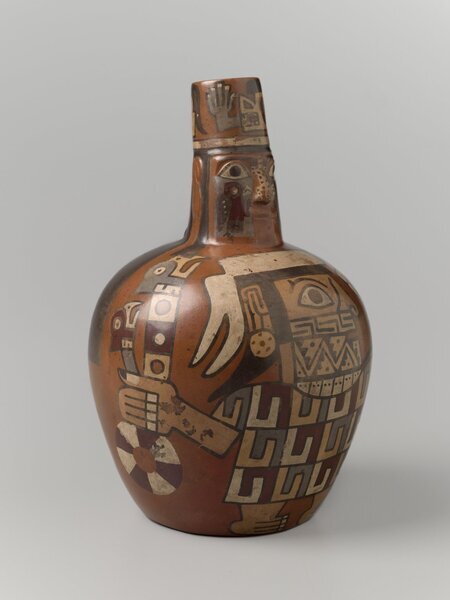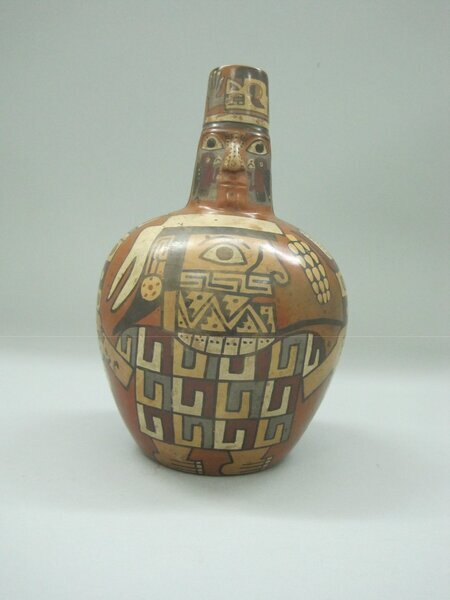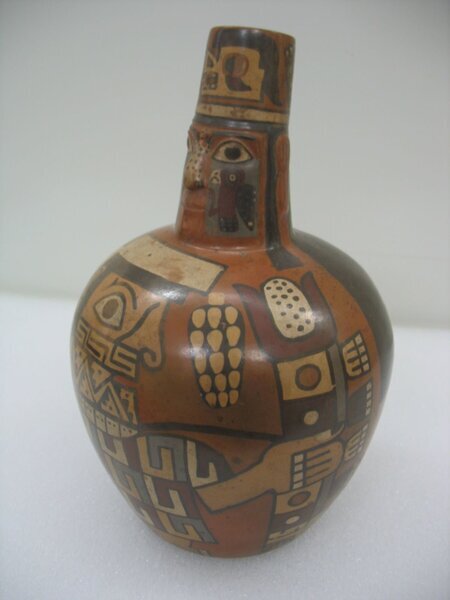Face Neck Jar Item Number: 41.418 from the Brooklyn Museum





Description
Face neck jar with polychrome decoration on red-brown slip. The vessel is bottle-shaped with a bulbous body and a tall, narrow neck. The neck is decorated with a modeled human face with a feline figure painted on the nose and two condors painted below the eyes representing tear lines. The body of the jar is decorated with a standing male figure wearing an elaborate tunic and holding a staff in each hand. One staff is surmounted by a bird head, while the other is surmounted by an ear of corn. The man's face, which is in profile, is decorated with painted geometrical designs and an ear of corn hangs from the front of his headdress. Condition: good. Text by GdeH 9/2011: In the Andes, maize did not have as pronounced a ritual significance. The main function has been its transformation into chica, a ceremonial drink of significant alcoholic content still produced and used for ritual events and feasts. During pre-Columbian times, corn, along with cotton, was the basis of trade between the coastal lowlands and the high altitude areas of Peru which provided potatoes and wool. This face neck jar has been made by a highland civilization, the Wari, who were active around present day Arequipa, but its imagery includes corn, a coastal element. The figure on this jar is a man of high status as indicated by the designs on his tunic. An ear of corn dangles from his headdress, and another adorns the tip of one of his staffs. Images of condors and felines that can be seen on his face are typically associated with power, and from these clues, it is possible to say that this figure’s imagery relating to corn is evidence of its importance to the Wari people.
Credit Line
Henry L. Batterman Fund
Item History
- Made between 650 and 1000
What
Who
- Culture
- Wari
Where
- Holding Institution
- Brooklyn Museum
When
- Creation Date
- between 650 and 1000
Other
- Classification
- Vessel